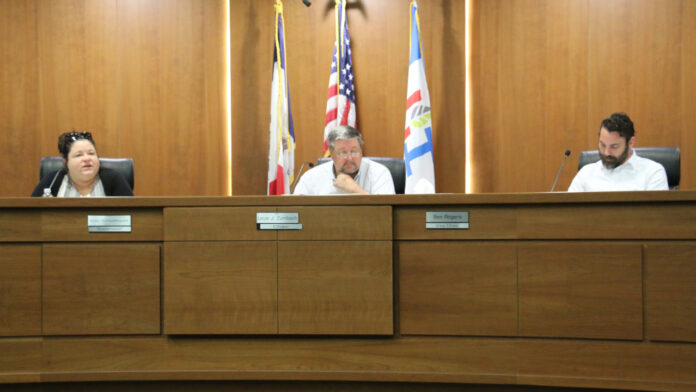A moratorium on new industrial-scale solar and wind energy projects in Linn County has been renewed for another three months. But it’s likely that this extension is the last one. The extension was unanimously approved by the board of supervisors at a work session Monday, and runs from June 30 through September 30. However, supervisors […]
A moratorium on new industrial-scale solar and wind energy projects in Linn County has been renewed for another three months.
But it’s likely that this extension is the last one.
The extension was unanimously approved by the board of supervisors at a work session Monday, and runs from June 30 through September 30.
However, supervisors Ben Rogers and Kirsten Running-Marquardt said they won’t approve any further moratorium extension requests, and Ms. Running-Marquardt added she feels the county needs to move quickly to update its renewable energy ordinance.
The moratorium was originally
enacted by the board in October 2022 and was previously extended by three-month intervals, first
in November 2022 and
again in March 2023. The county’s Planning and Zoning Commission had originally recommended a full-year moratorium, but supervisors modified that recommendation to the three-month window with renewal options.
The moratorium was originally suggested to allow county staff time to address recommended improvements in the
existing renewable energy ordinance. In the process of the county’s review of utility-scale solar projects
near Coggon and
near the former Duane Arnold Energy Center – both of which were eventually approved following contentious exchanges at public meetings – officials said they realized portions of the county’s ordinance could be improved.
Officials are also reviewing reports submitted by a number of ad hoc Renewable Energy Review Committees
appointed by the supervisors to address various aspects of the county’s renewable energy policies.
Those committees – including the Good Neighbor Practice Committee, Battery Energy Storage Systems Committee, Balancing Energy and Solar Committee and Lifecycle Costs Committee – met several times in a span of about three months before submitting their statements to the board in late May.
County officials are now reviewing the statements to draft a new utility-scale solar zoning code, which will then be reviewed by the Planning and Zoning Commission and the board of supervisors in upcoming meetings before being officially enacted. That process is expected to take two to three months, with opportunities for public input throughout the process.





